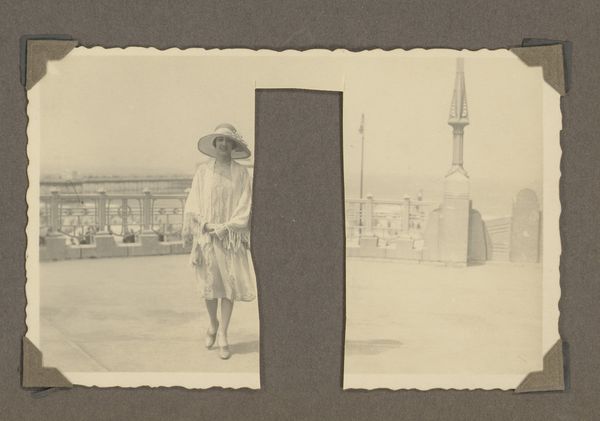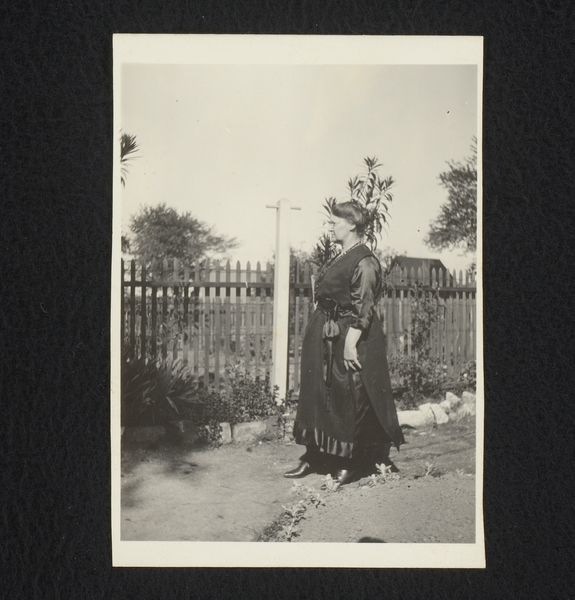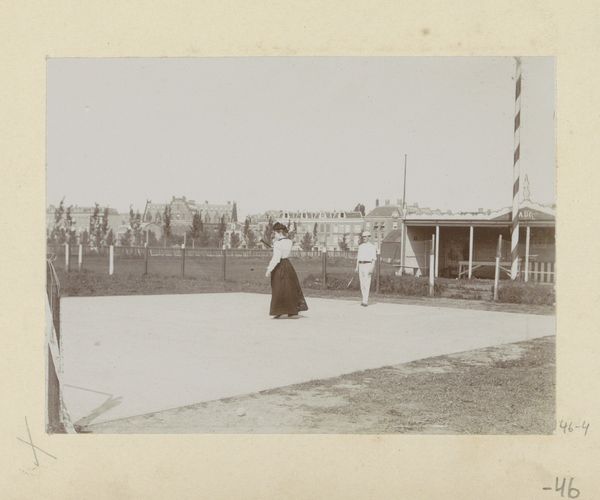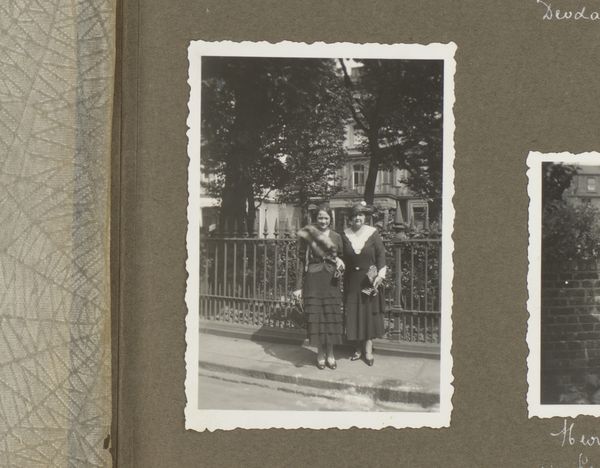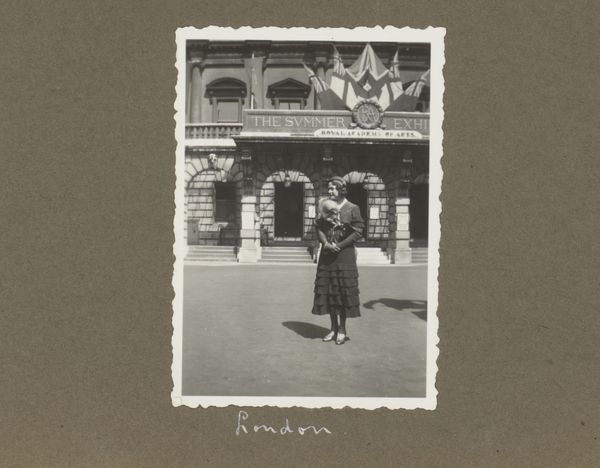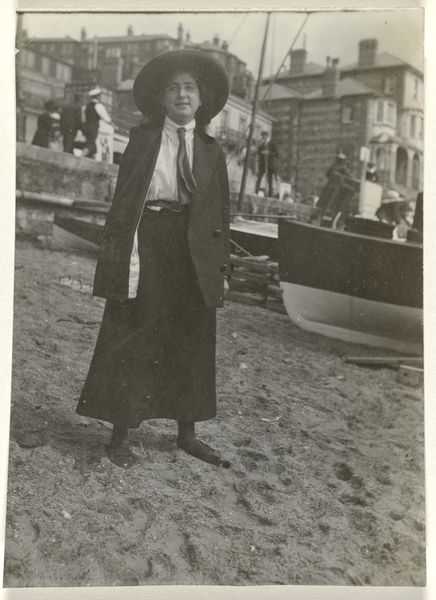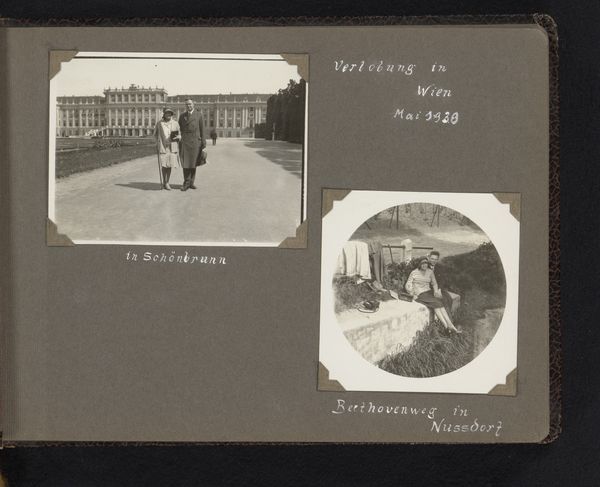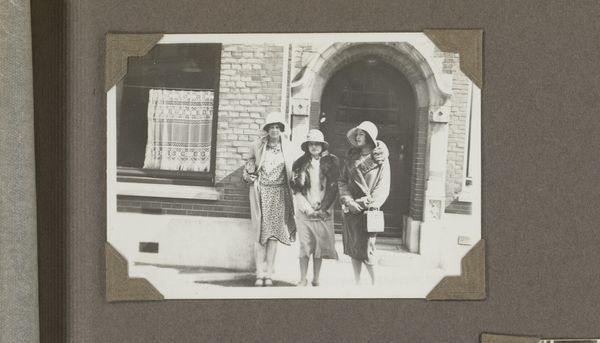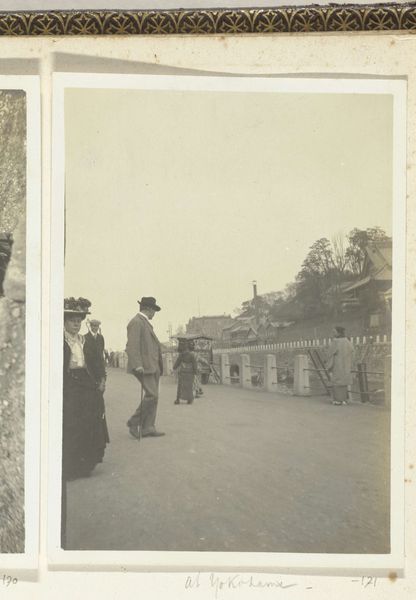
photography, gelatin-silver-print
#
portrait
#
photography
#
historical fashion
#
gelatin-silver-print
#
cityscape
#
modernism
Dimensions: height 68 mm, width 114 mm
Copyright: Rijks Museum: Open Domain
Curator: This is a fascinating image! “Wilhelmina van Zijll de Jong voor het Kurhaus, Scheveningen,” taken in 1932. It's a gelatin silver print. Editor: There's a beautiful simplicity here. A solitary figure confidently facing the camera against a bustling cityscape – a strong contrast. What's most striking is the light; how it plays off the woman's dress and the architecture behind her. Curator: The location is key. The Kurhaus was and still is a significant social and cultural landmark in Scheveningen. This image captures a moment in the resort town's history, when places like the Kurhaus were designed to facilitate modern life. Notice the cityscape. Editor: Indeed. The materials used also speak volumes. A gelatin-silver print points to mass production; easily accessible photographic methods made it viable for ordinary people. Who was the photographer, and what role did photography play for women then? Was it leisure? Work? A mix of the two? And why the sharp contrast with the fence? Curator: The photographer is unfortunately unknown, which limits our understanding of intent. However, we can speculate that photos were used for documentation, as a leisure pursuit, a social practice and perhaps it was a souvenir intended to commemorate a visit to the popular resort town. Also, it seems as though the barrier of the fence enhances the main figure's confidence. The woman and photographer are making her *matter*. Editor: Perhaps. But notice the attire. What's the garment made of? Does the fabric reflect a changing culture or fashion trend of the era? Curator: Analyzing the fabrics could offer insights into consumerism and manufacturing. Although, because this is a black-and-white photograph, the nature of the fabric and production is difficult to analyze here. But even then, we know mass-production processes influenced availability and aesthetics. Editor: Precisely! These ordinary elements in the photo suggest changing times; documenting and influencing socio-economic shifts and power structures. Curator: A simple portrait, and yet layers of socio-economic context, visible in the figure, architecture, and medium of photography. It tells us so much about Dutch culture during the interwar period. Editor: The interplay between personal identity and public life, captured in a fleeting moment and rendered lasting through accessible, mass-produced media – it’s thought-provoking.
Comments
No comments
Be the first to comment and join the conversation on the ultimate creative platform.
